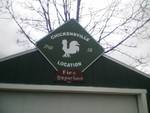Torch Lake Township, Michigan | |
|---|---|
 Location within Houghton County (red) with the administered portion of the Hubbell community (pink) | |
| Coordinates: 47°07′42″N88°24′09″W / 47.12833°N 88.40250°W | |
| Country | United States |
| State | Michigan |
| County | Houghton |
| Established | 1886 |
| Government | |
| • Supervisor | Brian Cadwell |
| Area | |
• Total | 93.0 sq mi (240.9 km2) |
| • Land | 80.1 sq mi (207.6 km2) |
| • Water | 12.9 sq mi (33.3 km2) |
| Elevation | 741 ft (226 m) |
| Population (2020) | |
• Total | 1,893 |
| • Density | 20/sq mi (7.9/km2) |
| Time zone | UTC-5 (Eastern (EST)) |
| • Summer (DST) | UTC-4 (EDT) |
| ZIP code(s) | |
| Area code | 906 |
| FIPS code | 26-80120 [1] |
| GNIS feature ID | 1627170 [2] |
| Website | Official website |
Torch Lake Township is a civil township of Houghton County in the U.S. state of Michigan. As of the 2020 census, the population of the township was 1,893. [3] The township was established in 1886 and is one of the largest townships in Houghton County by area. It is surrounded by the Torch Lake, the Portage Lake, and Lake Superior. As well as a large number of unincorporated communities, the township also includes a portion of the Baraga State Forest which lies along the shores of Keweenaw Bay. The township borders Schoolcraft Township to the north, Osceola Township to the northwest, and Chassell Township to the southwest. [4] [5] [6] The community of Hubbell serves as the major population center of the township, as well as hosting the Township Hall itself. [7] [4] The mostly uninhabited 91-acre Rabbit Island, located offshore in Lake Superior, is a part of the township. [8]



